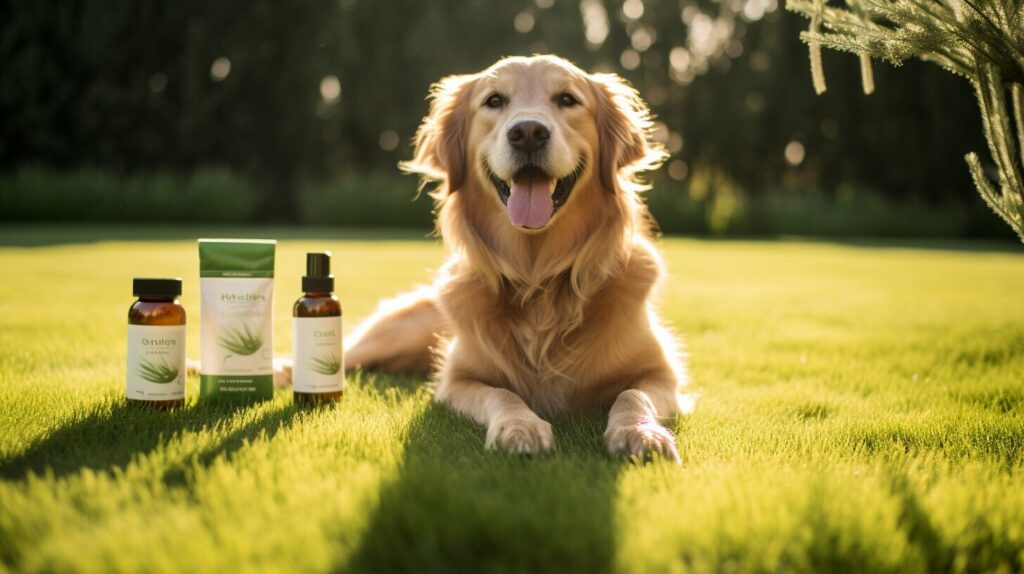If you’re a dog owner, you know how important it is to keep your furry friend healthy and happy. One of the biggest threats to your dog’s health are ticks, which can cause a range of diseases if left untreated. But, with the right information and techniques, you can safely and quickly remove ticks from your dog to prevent any potential health risks. In this guide, we will provide you with all the information you need to know about ticks on dogs and how to remove them safely and effectively.
Key Takeaways
- Ticks on dogs can pose a serious health risk if not properly removed.
- It is important to regularly check your dog for ticks and take preventative measures to avoid infestations.
- Safe and effective tick removal techniques involve using proper tools and following step-by-step instructions.
- After tick removal, monitor the bite site for any signs of infection or complications and consider seeking veterinary assistance if necessary.
- Prevent future tick infestations by using tick prevention products and creating a tick-free environment for your dog.
Understanding Ticks and Their Dangers to Dogs
As a responsible dog owner, it’s important to understand ticks and the potential dangers they pose to your furry friend. Ticks are small, blood-sucking parasites that attach to dogs and feed on their blood. They are especially prevalent during the warmer months and can be found in wooded areas, tall grasses, and even in your own backyard.
If left untreated, ticks can transmit a variety of diseases to dogs, such as Lyme disease, Rocky Mountain spotted fever, and Ehrlichiosis. These diseases can cause serious health problems in dogs, including fever, joint pain, lameness, and even death.
The best way to protect your dog from tick-borne diseases is through prevention. Regular tick checks and using effective tick prevention products, such as spot-on treatments or tick collars, can help keep your dog safe from ticks.
When removing ticks from your dog, it’s important to do so safely and thoroughly to ensure all parts of the tick are removed. The best way to remove ticks from dogs is by using fine-tipped tweezers or a tick remover. Avoid using your fingers or squeezing the tick, as this can increase the risk of transmitting infections to your dog.
Remember: prompt and effective tick removal is crucial in reducing the risk of tick-borne diseases in dogs.
Identifying Ticks on Your Dog
To effectively remove ticks from your dog, it’s important to know how to identify them. Ticks are small, blood-sucking parasites that can be found on a dog’s skin, often in areas with less hair, such as the ears, underbelly, and around the legs. They can vary in size and color, ranging from the size of a pinhead to a small grape and from brown to reddish-brown or gray.
When inspecting your dog for ticks, be sure to thoroughly examine their entire body, including between toes, under armpits, and inside ears. Ticks can be hard to spot, so it’s important to run your hands over your dog’s body, feeling for any bumps or lumps that might indicate the presence of a tick.
If you find a tick on your dog, it’s important to act quickly. Keep in mind that ticks need to be attached to a host for at least 24 hours before they can spread disease, so removing them promptly can help reduce the risk of illness.
Tick Bite Symptoms
It’s also important to know the symptoms of a tick bite on your dog. Some common signs of a tick bite include:
- Redness or inflammation around the bite
- Swelling or a raised bump on the skin
- Itching or discomfort
In some cases, a dog may experience more severe symptoms, such as fever, lethargy, and loss of appetite. If you notice any concerning symptoms, it’s important to seek veterinary treatment right away.
When it comes to ticks on dogs, prevention and swift removal are key to keeping your pet healthy and happy. By learning how to identify ticks on your dog, you can take the necessary steps to protect your furry friend from these pesky parasites.
Safe Tick Removal Techniques for Dogs
Removing ticks from your dog is an important task that should be done safely and effectively. It’s essential to use proper tools and techniques to ensure complete tick removal and prevent further complications. Here are some safe tick removal techniques for dogs:
Step 1: Preparation
Before you start the tick removal process, gather all the necessary tools you’ll need, such as fine-tipped tweezers or a tick remover. Wear gloves to protect yourself from potential tick-borne diseases. Choose a well-lit, comfortable area to perform the procedure.
Step 2: Grasp the Tick
Using your tweezers or tick remover, grasp the tick as close to the skin as possible. Be gentle and avoid squeezing the tick, which can cause it to release harmful bacteria or toxins into your dog’s bloodstream.
Step 3: Remove the Tick
Pull the tick straight out with a steady, even pressure. Do not twist or jerk the tick, as this can cause the mouthparts to break off and remain in your dog’s skin, causing further irritation and infection.
Step 4: Check for Remaining Parts
After removing the tick, check to ensure that you’ve removed the entire tick, including its head and mouthparts. If any parts remain, use your tweezers to gently remove them.
Step 5: Disinfect the Bite Area
After tick removal, disinfect the bite area with rubbing alcohol or antiseptic to prevent infection. Monitor the area for any signs of redness, swelling, or infection.
Step 6: Dispose of the Tick
Dispose of the tick by placing it in a sealed container or flushing it down the toilet. Do not crush the tick with your fingers, as this can release harmful bacteria or toxins.
Remember to always wash your hands thoroughly after tick removal, and keep an eye on your dog for any signs of tick-borne diseases. If you have any concerns or difficulty in removing the tick, seek veterinary assistance.
Precautions and Tips for Tick Removal
If you’ve successfully removed a tick from your dog, it’s important to take steps to prevent future infestations. Here are some precautions and tips to keep in mind:
1. Practice Tick Control for Dogs
Preventing future tick infestations requires a proactive approach. Consider using tick prevention products such as spot-on treatments, tick collars, or oral medications. These products can help to repel or kill ticks before they have a chance to bite your dog.
If you live in an area with a high tick population, you may also want to consider professional yard treatments or specific tick-repellent landscaping. Additionally, keeping your lawn mowed and free of debris can help reduce the presence of ticks on your property.
2. Perform Regular Tick Checks
Regularly checking your dog for ticks is one of the most important steps you can take in preventing tick-borne diseases. Thoroughly inspect your dog’s skin, particularly in areas where ticks are commonly found such as the ears, paws, and underbelly. If you do find a tick, remove it promptly and monitor for any signs of infection.
3. Avoid Tick-Infested Areas
Dogs can pick up ticks from a variety of environments, including wooded areas, tall grass, and fields. When possible, avoid these types of environments or use tick prevention products such as sprays or collars to repel ticks.
4. Educate Others on Tick Prevention and Removal
Help spread awareness of the importance of tick prevention and removal to others. Share your knowledge with fellow dog owners, and encourage them to perform regular tick checks and implement prevention measures.
By taking these precautions and tips for tick removal, you can help keep your dog safe and healthy from the dangers of these tiny pests.
After Tick Removal: Monitoring and Treatment
Once you have removed a tick from your dog, it is important to monitor the bite site for any signs of infection or inflammation. Keep an eye on the area for at least the next 24 to 48 hours.
If you notice any redness, swelling, oozing, or discharge, contact your veterinarian immediately. These may be signs of a tick-borne disease or a localized infection. Your vet may recommend additional treatment, such as antibiotics, to prevent further complications.
In some cases, your dog may develop other symptoms after tick removal, such as lethargy, loss of appetite, fever, or joint pain. These may indicate more serious tick-borne illnesses, such as Lyme disease, ehrlichiosis, or anaplasmosis. If you notice any of these symptoms, seek veterinary care as soon as possible.
Remember, prompt and proper tick removal and monitoring are key to preventing tick-borne diseases and ensuring your dog’s health and well-being. Stay vigilant and seek veterinary assistance if needed.
Seeking Veterinary Assistance for Tick Removal
If you are having difficulty removing a tick from your dog or if you notice any signs of infection or illness after removal, it may be necessary to seek veterinary assistance. Your veterinarian can provide professional guidance and treatment for tick-related concerns.
If your dog has been bitten by a tick, your veterinarian may recommend testing for tick-borne diseases. Some common tick-borne diseases in dogs include Lyme disease, Rocky Mountain spotted fever, and Ehrlichiosis. Early detection and treatment of these diseases is crucial for your dog’s health.
Additionally, if you notice any signs of an allergic reaction, such as swelling or difficulty breathing, seek veterinary assistance immediately. These symptoms can be serious and require prompt medical attention.
Remember, prevention is the best way to protect your dog from ticks and tick-borne diseases. However, if you do encounter ticks, be sure to remove them safely and promptly. If you have any concerns or questions about tick removal or prevention, don’t hesitate to consult with your veterinarian.
Preparing Your Home for Tick Prevention
One of the most effective ways to prevent tick infestations in dogs is to create a tick-free environment in your home and yard. This can be achieved by implementing a few simple measures:
- Keep your lawn mowed and well-maintained.
- Remove leaf litter and brush from your property.
- Limit your dog’s exposure to wooded and grassy areas where ticks are commonly found.
- Use natural tick-repellent products around your home and yard, such as cedar wood chips or essential oils like peppermint or lavender.
- Regularly check your dog for ticks after outdoor activities.
Tick Prevention Products for Dogs
There are a variety of tick prevention products available for dogs, including spot-on treatments, collars, and oral medications. These products work by killing ticks on contact or repelling them from attaching to your dog’s skin.
When choosing a tick prevention product for your dog, it’s important to consider factors like the product’s effectiveness, safety, and your dog’s individual needs. Consult with your veterinarian to determine the best option for your dog.
Remember that no tick prevention product is 100% effective, so it’s still important to regularly check your dog for ticks and remove them promptly.
Educating Others on Tick Prevention and Removal
As a responsible dog owner, it’s not just about keeping your own furry friend safe from ticks, but also educating others about the importance of tick prevention and removal. Ticks can pose a serious health risk to dogs, and it’s our collective responsibility to ensure their safety.
One of the best ways to educate others is by sharing information through social media or your personal network. You can share articles or videos on tick prevention and removal, or post pictures of your own dog receiving tick prevention treatments. This helps create awareness and encourages others to take action.
Another way to educate others is by setting a good example. Make sure your own dog is on a regular tick prevention program and that you conduct regular tick checks. When others see how seriously you take tick prevention, they may be encouraged to do the same.
Additionally, you can participate in community events such as dog shows or pet adoption fairs to share information about tick prevention. You can hand out brochures or flyers and answer questions from pet owners who may be unaware of the risks associated with ticks.
It’s important to remember that tick prevention isn’t just about protecting your own dog, but also other dogs in your community. By educating others and raising awareness, we can work together to prevent tick infestations and ensure the safety of our furry companions.
- Remember to share educational material on tick prevention on your social media or personal network.
- Set a good example by keeping your own dog on a regular tick prevention program and conducting regular tick checks.
- Participate in community events to hand out educational material and answer questions from pet owners.
By educating others about tick prevention and removal, we can all work together to create a safer environment for our beloved dogs.
Conclusion
As a responsible dog owner, it is important to keep your pet safe from ticks and the potential dangers they can pose. This article has provided useful information on identifying ticks on dogs, safely and effectively removing ticks, and preventing future tick infestations.
Remember to perform regular tick checks on your dog, especially after outdoor activities. If you find a tick, use the proper tools and techniques to remove it safely and completely. Keep your dog on preventive treatments, such as tick collars or spot-on treatments, and reduce tick habitats in your yard by keeping grass and bushes trimmed.
If you suspect your dog may have tick-borne diseases or have difficulty removing ticks, seek veterinary assistance immediately. Educate other dog owners about tick prevention and removal to promote responsible pet care practices.
Stay vigilant and keep your dog tick-free!
FAQ
Q: How do I safely remove a tick from my dog?
A: To safely remove a tick from your dog, you can use a tick remover tool or fine-tipped tweezers. Grasp the tick as close to your dog’s skin as possible and gently pull upward with steady pressure. Avoid twisting or jerking the tick, as this can cause the mouthparts to break off and remain in your dog’s skin. After removal, clean the area with antiseptic and monitor for any signs of infection.
Q: What are the dangers of ticks on dogs?
A: Ticks on dogs can transmit various diseases, including Lyme disease, ehrlichiosis, anaplasmosis, and babesiosis. These diseases can cause symptoms such as fever, lethargy, joint pain, and loss of appetite. In severe cases, they can lead to organ damage and even death. It’s important to remove ticks promptly and take preventive measures to protect your dog from tick-borne illnesses.
Q: How do I identify ticks on my dog?
A: Ticks vary in size and appearance depending on their life stage, but they typically have a rounded body with eight legs. They can range in color from tan to dark brown or black. Ticks are commonly found in areas with thin or no fur, such as the ears, armpits, groin, and between the toes. Conduct regular tick checks and look for any small, raised bumps or dark specks on your dog’s skin.
Q: What precautions should I take during tick removal?
A: When removing ticks from your dog, it’s important to wear gloves to protect yourself from potential diseases. Use a proper tick removal tool or fine-tipped tweezers to ensure complete removal. Avoid squeezing the tick’s body, as this can force infectious material into your dog’s bloodstream. After removal, clean the area thoroughly and wash your hands. Monitor the tick bite site for any signs of infection.
Q: How can I prevent future tick infestations in my dog?
A: To prevent future tick infestations, use tick prevention products recommended by your veterinarian, such as spot-on treatments or tick collars. Keep your dog away from tick-infested areas, such as tall grass or wooded areas. Regularly groom your dog and conduct tick checks after outings. Additionally, you can create a tick-free environment by mowing the lawn, removing leaf litter, and keeping outdoor areas tidy.
Q: When should I seek veterinary assistance for tick removal?
A: It is advisable to seek veterinary assistance for tick removal if you are unsure or uncomfortable performing the procedure yourself. Veterinary assistance may also be necessary if the tick is deeply embedded, if your dog is exhibiting signs of illness or discomfort after tick removal, or if you suspect your dog may have contracted a tick-borne disease. Consulting a veterinarian can ensure proper diagnosis and treatment.
Q: How can I educate others on tick prevention and removal?
A: You can help educate others by sharing information on social media, distributing pamphlets or flyers, or organizing educational events. Raise awareness about the risks of ticks and the importance of tick prevention measures, such as regular tick checks and the use of tick prevention products. Encourage responsible pet ownership and promote collaboration among pet owners, veterinarians, and community organizations to combat tick-related issues.



